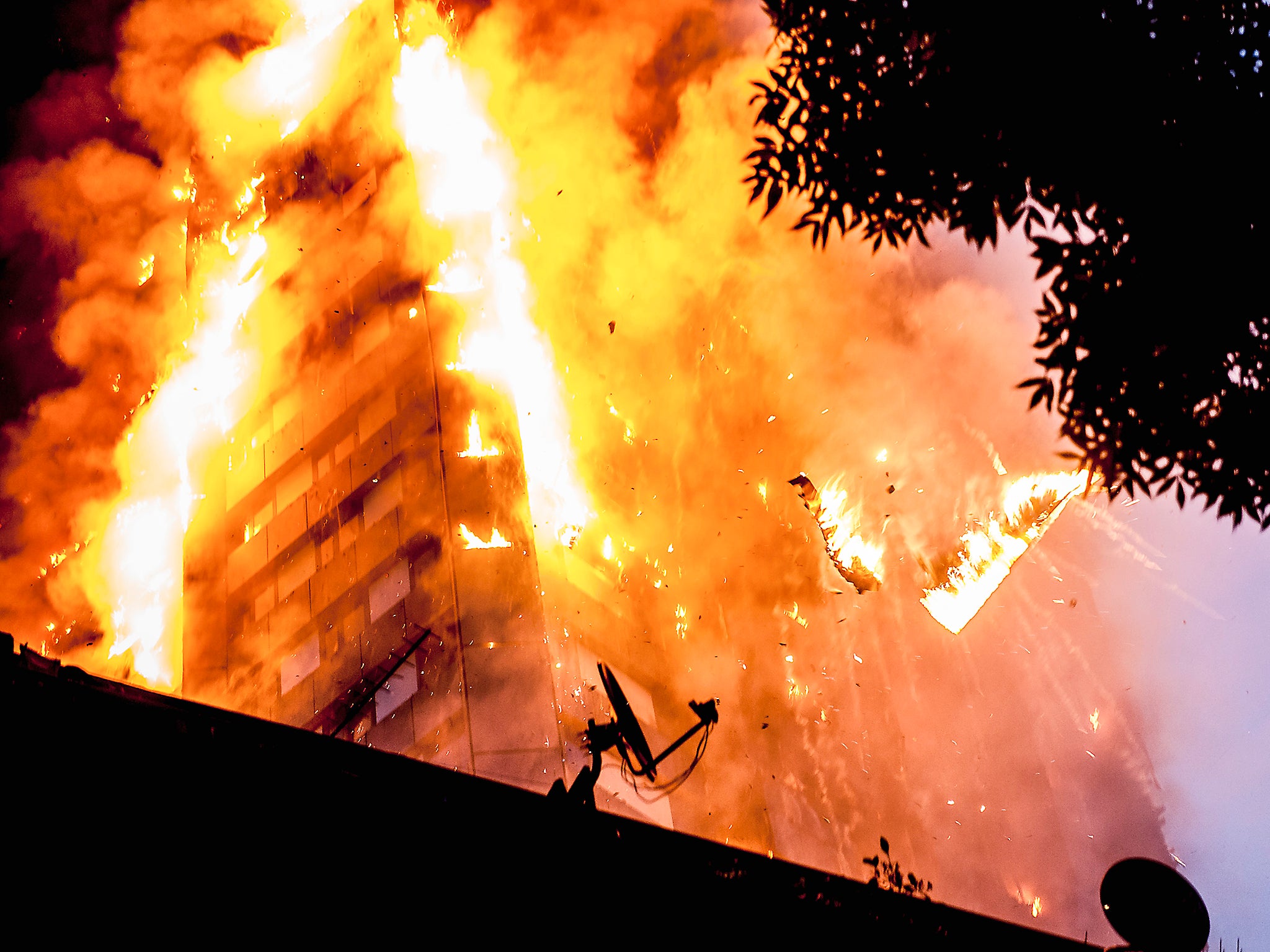Grenfell Tower – a monument to a broken society
People living in older, high-rise, often council-owned buildings have every right to wonder why the Government did not act when it had the chance

On Tuesday, it is likely that few people in Britain had ever heard of Grenfell Tower. Now, and forever more, this unremarkable block of flats in west London will be synonymous with the disaster that consumed it.
The fire that broke out in the small hours of Wednesday morning spread quickly and uncontrollably to every floor of the 24-storey building from the fourth up. Fire alarms appear to have alerted few residents to the horror around them. The first many knew of the blaze was the smell of smoke.
Emergency services were on the scene with admirable speed and acted with astonishing bravery. Firefighters climbed the stairs towards the flames as residents ran for their lives. Their efforts are beyond commendable.
Some residents on the upper floors, unable to escape through the black, acrid smoke could not be rescued either. Eye-witness accounts of people jumping – and of children being dropped in desperation – many metres from burning rooms are hard to bear. The final death toll is likely to be considerable. The task ahead for those who will have to enter the charred remains of the tower is unimaginable.
As the search for victims goes on it is right that the focus of attention should be on those who have perished and been injured in this tragedy, as well as those who are in mourning or who await news – more perhaps in hope than expectation.
Yet inevitably we must ask how this catastrophe could come about in modern Britain. London, as politicians and business folk perennially remind us, is one of the great cities of the 21st century, the economic powerhouse of the UK. How is it then that a recently renovated apartment block housing hundreds of people could become a raging inferno in a matter of minutes – and could provide insufficient means of escape to those inside?
Residents say they had warned of safety concerns, including the risk of fire. It appears that there was no integrated fire alarm system in place and no water sprinklers which might have dampened the flames. Assessments had been conducted by the fire brigade and the building passed the tests undertaken. Plainly, though, something was not right.
Speculation has centred on the works carried out on the flats in the past few years, particularly the external recladding. Was the material used inadequately fireproofed? Or worse, did the work to the exterior create an air pocket between the new outer layer and the old, therefore encouraging the blaze to take hold? It is imperative that a full investigation is conducted and that it begins now – not least because residents of other blocks will need reassurance that there can be no repeat of this kind of apocalyptic scene.
There are broader issues to consider too, however. The first is Britain's approach to social housing, which for too long has been wanting. Not only has the stock of social housing in this country become depleted, but its management appears in some instances to leave residents unclear about who is responsible for the homes they live in. Local authorities might own the property; but its management will usually be in the hands of a discrete company. They in turn often outsource specific maintenance tasks. Where does the buck stop?
It has also been noted that a review of building regulations concerning fire safety was promised by the Government last year but never took place. Pressure for such a review itself followed a fire in 2009 at a tower block in Camberwell, south London, which claimed six lives. People living in older, high-rise, often council-owned buildings have every right to wonder why the Government did not act when it had the chance. In housing policy the needs of housebuilders so often seem to come above those of people who just want a decent home to live in; and the focus on increasing private homeownership is much sharper than on improving our low-cost rental stock.
London may be Britain's financial strength but it is also the place that most obviously symbolises the inequality between the country's haves and have-nots. The social housing of Grenfell Tower, on the edge of the sprawling Lancaster West Estate, looks down on homes just a few streets away which are worth many millions of pounds.
Last week, the constituency in which rich and poor rub shoulders but barely see one another became a symbol of the Conservatives' fall from grace, as Kensington – that bastion of blue Toryism – turned to Labour. In the aftermath of the Grenfell Tower disaster, politics will be put aside. But when the dust settles, and the ash, we must consider whether this tragedy is not only a personal nightmare for all who are directly affected but is also an emblem of a broken society.
Join our commenting forum
Join thought-provoking conversations, follow other Independent readers and see their replies
Comments